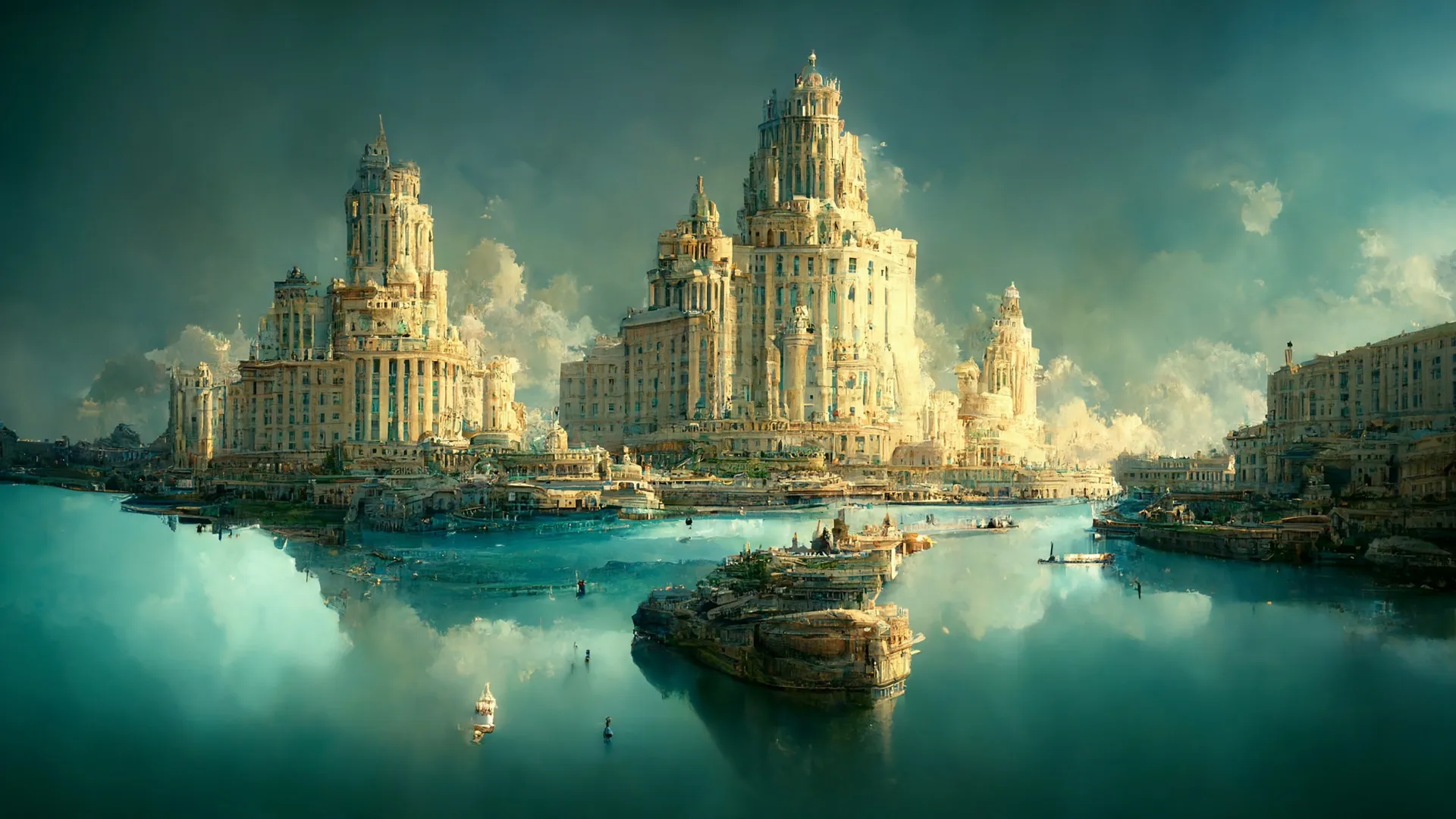Introduction
Throughout history, countless cities have existed not in reality but in the realm of myth, folklore, and imagination. These places—sometimes lost, sometimes entirely fictional—capture our imagination, fueling a desire to explore the unknown. But where did these legendary cities originate? What truth, if any, lies behind them? This article delves into the most famous invisible cities and examines their cultural and historical significance.
The Lost City of Atlantis: Truth or Myth?
Perhaps the most famous of all mythical cities, Atlantis was first described by the ancient philosopher Plato around 360 BCE. Said to be a powerful and advanced civilization, Atlantis allegedly sank beneath the waves in a catastrophic event.
- Plato’s Account: In his dialogues Timaeus and Critias, Plato describes Atlantis as a utopian society that eventually fell into decadence and was punished by the gods.
- Possible Locations: Some researchers link Atlantis to the Minoan civilization, which was devastated by the Thera eruption around 1600 BCE.
- Cultural Impact: Atlantis has inspired countless books, movies, and conspiracy theories, making it a cornerstone of lost civilization lore.
El Dorado: The Golden City of South America
Unlike Atlantis, El Dorado was not just a city but a kingdom or even an empire overflowing with gold. The legend originated from European explorers in the 16th century, who believed indigenous South American cultures held vast golden treasures.
- The Spanish Conquistadors: Inspired by tales of a golden king who covered himself in gold dust before washing it off in a sacred lake, Spanish explorers ventured deep into the Amazon.
- The Guatavita Connection: Some link El Dorado to Lake Guatavita in Colombia, where the Muisca people performed ceremonies involving gold.
- The Ongoing Search: Modern archaeologists have yet to find evidence of an actual golden city, but expeditions continue in the Amazon and Andes.
Shangri-La: The Himalayan Paradise
Shangri-La, a utopian paradise hidden in the mountains, was first described in James Hilton’s 1933 novel Lost Horizon. Though a modern invention, the idea of a hidden Buddhist paradise has roots in Tibetan and Hindu traditions.
- Shambhala in Tibetan Buddhism: Some believe Hilton’s Shangri-La was inspired by Shambhala, a legendary kingdom mentioned in ancient texts.
- Real-Life Counterparts: Some locations in Tibet and Nepal claim to be the real-life Shangri-La, drawing travelers in search of spiritual enlightenment.
- Symbolism: Beyond its potential geographic existence, Shangri-La represents the human longing for peace, harmony, and escape from modern chaos.
Other Invisible Cities Worth Mentioning
- Lyonesse: A city from Arthurian legend, said to have sunk off the coast of Cornwall, much like Atlantis.
- Iram of the Pillars: A city mentioned in the Quran, believed to have been buried beneath the Arabian sands.
- Zerzura: A mythical oasis city in the Sahara, rumored to be filled with riches and guarded by mysterious beings.
Why Do These Cities Fascinate Us?
The enduring appeal of mythical cities lies in our deep-seated desire to believe in hidden wonders and unexplored territories. These tales evoke curiosity, a sense of adventure, and sometimes even serve as cautionary parables about human nature and hubris.
Conclusion
While these legendary cities may never be found, they continue to shape literature, film, and exploration. Whether they once existed or are purely products of imagination, their allure is undeniable. So, while you may not discover Atlantis or El Dorado, the search itself is what keeps the spirit of adventure alive.

Leave a Reply